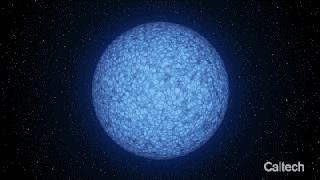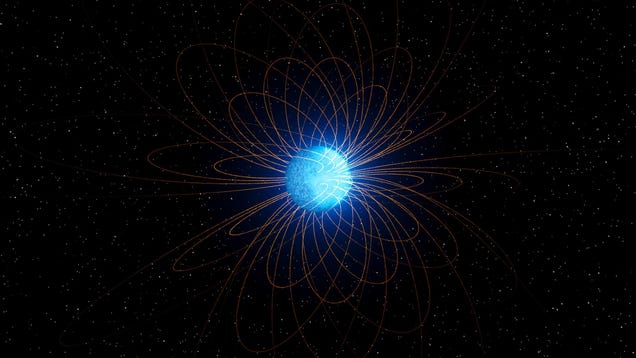Astronomers have discovered an ancient stellar remnant that keeps its light elements separate, in a strange first.
The object is a white dwarf, an ancient core of a dead star. White dwarfs are small (hence their name, obviously), clocking in at about the size of Earth, but with a mass similar to that of the Sun. Under their intense gravity, heavier elements sink towards the centre of the dwarf, while lighter elements float nearer to its surface.
The recently observed star’s lightest elements, helium and hydrogen, sit on the surface. But instead of mixing together, they take up opposite ends of the star. The team’s research describing the object was published today in Nature.
“Some white dwarfs transition from being hydrogen- to helium-dominated on their surface,” said Ilaria Caiazzo, a researcher at Caltech and lead author of the new study, in an institute release. “We might have possibly caught one such white dwarf in the act.”
First spotted by the Zwicky Transient Facility (ZTF), the white dwarf is nicknamed Janus for its two-faced nature. Its real name is ZTF J203349.8+322901.1, but that doesn’t have the same ring to it. Janus rotates about its axis every 15 minutes, according to the team’s observations.
The researchers followed up on the ZTF observations using the CHIMERA instrument at the Palomar Observatory and the HiPERCAM instrument on the Gran Telescopio Canarias. Observations of the dwarf using a spectrograph at the Keck Observatory revealed that helium and hydrogen appeared to be present on opposite sides of the object.

The researchers believe that the dwarf’s two-facedness may be due to its intense magnetic fields. But there are a couple theories about exactly how those magnetic fields may affect the distribution of the star’s gases.
One theory is that an asymmetric magnetic field is causing one side of Janus to withhold all the hydrogen. But another is that the fields reduce the atmosphere’s gas pressures, creating an “ocean” of hydrogen on the stellar remnant’s surface, according to study co-author James Fuller, an astrophysicist at Caltech.
“We don’t know which of these theories are correct, but we can’t think of any other way to explain the asymmetric sides without magnetic fields,” Fuller said in the same release.
Exactly how the magnetic fields are causing Janus’s juxtaposition is not certain, but observations of other magnetized white dwarfs may clarify things.
ZTF is a great instrument for seeing such objects; ZTF first spotted the ‘Green Comet’ that enamored stargazers earlier this year. The facility also first saw a star in 2020 that apparently ate one of the planets in its star system.
The Vera Rubin Observatory will certainly help researchers in the search for such white dwarfs. The Legacy Survey of Space and Time camera at the observatory will image vast swathes of the night sky every 15 seconds, providing more surveillance of objects that have quick changes in brightness.
There may be more dwarfs like Janus out there, we’ll have to wait for them to show their faces.
More: Astronomers Found an Ultra-Dense White Star the Size of Our Moon
